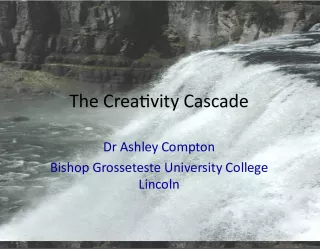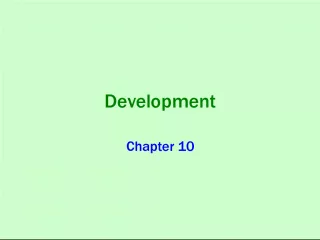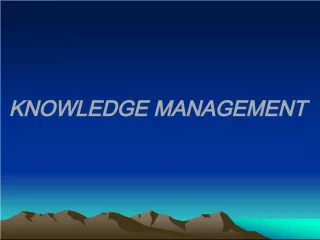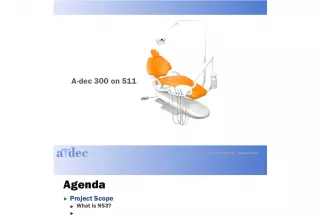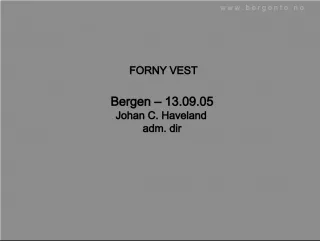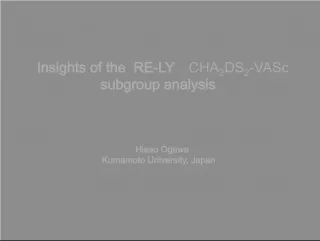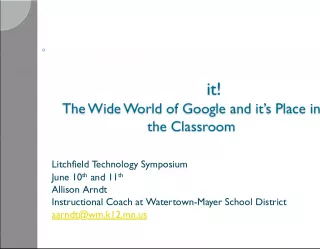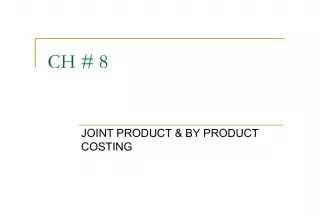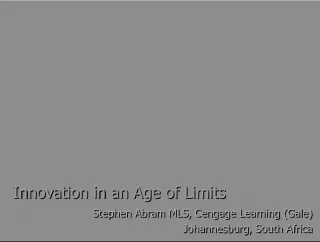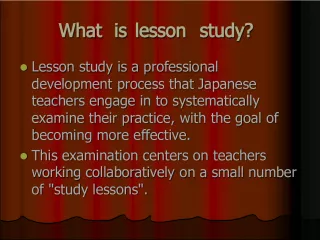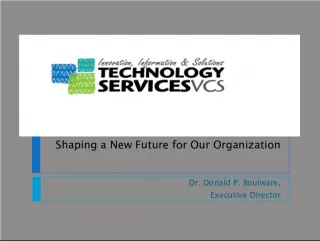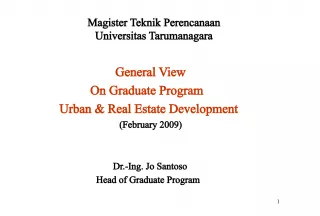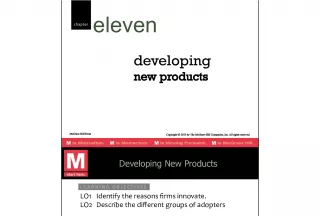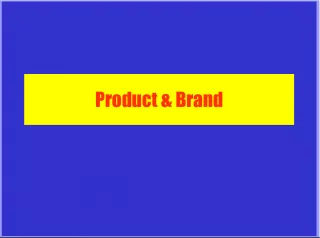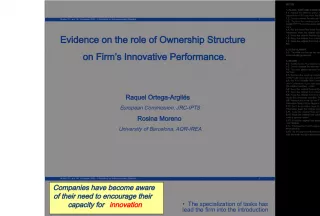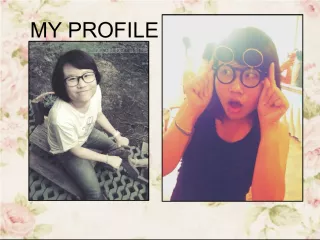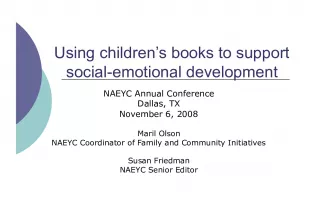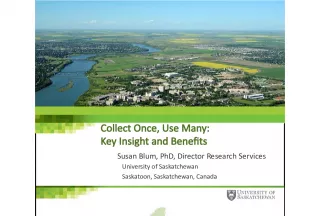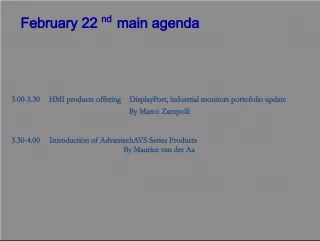Importance of Innovation and Creativity in Product Development: Insights from a 1993 Study
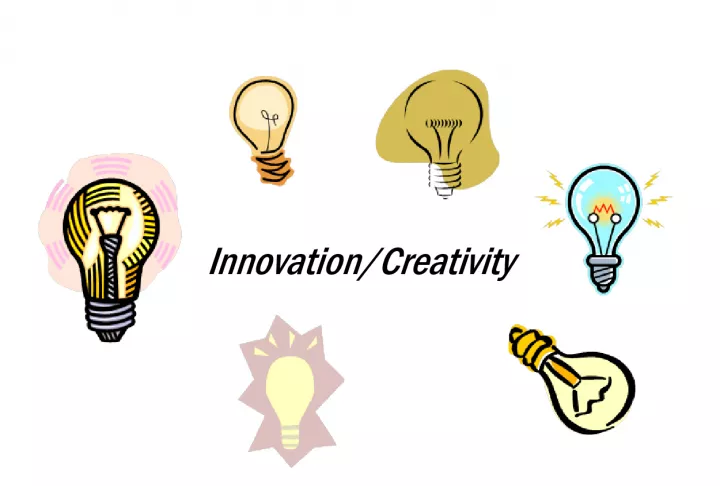

This article discusses the importance of innovation and creativity in the development of new products. It explores the sources of new product ideas and techniques for fostering
- Uploaded on | 0 Views
-
 claudio
claudio
About Importance of Innovation and Creativity in Product Development: Insights from a 1993 Study
PowerPoint presentation about 'Importance of Innovation and Creativity in Product Development: Insights from a 1993 Study'. This presentation describes the topic on This article discusses the importance of innovation and creativity in the development of new products. It explores the sources of new product ideas and techniques for fostering. The key topics included in this slideshow are . Download this presentation absolutely free.
Presentation Transcript
Slide1Innovation/Creativity
Slide2Innovation/Creativity• Sources of new product ideas • Creativity: can it be learned? • Techniques for fostering group creativity • Increasing personal creativity
Slide3Importance of Innovation to Companies*Companies say it is important... ...But Few Feel Good at it Find innovation unimportant Find innovation important to their business Good at innovation Think they are bad at innovation * Based on 1993 study of American Companies
Slide4 Sources of New Product Ideas
Slide5Sources of new ideasRapidly Changing Environment Economy Technology Customers Competitors Maverick Government Regulations Distribution Channels Management Employees Suppliers
Slide6Japanese Industrial Sector Spend onR&D Outside its Core Sector 1980-86 Textiles Fabricated Metals Iron & Steel Commun- ications equipment Electronics Precision Machinery
Slide7Regulatory ChangesChange Product Area Fire retardant foam Financial Services Act New infills for sofas, mattresses, etc Insurance salesmen had to declare whether ‘tied’ or ‘independent’. leading to new selling techniques
Slide8Economic ChangesEconomic Change Product Example Recession High interest rates Negative equity High unemployment Multiple savings products New lower-cost foods Special loans Home brewing (!)
Slide9Environmental/DemographicChanges Environmental - Health consciousness leads to Kraft’s ‘fat free’ ice-cream - ‘Green’ consciousness leads to change in solvent based to water based paints - Increase in crime leads to new security devices (e.g. remote control security systems) Demographic - Ageing of population leads to residential care insurance - Both parents working leads to new types of convenience foods - Baby boomers having their own children leads to new types of family car (e.g. Renault Espace)
Slide10TechnologyTechnology New Product/Service/Process EPOS Revolutionised stock holding at retailers Genetic Engineering Human ears grown on a mouse’s back
Slide11Customers: Product Innovation FromMarket Needs vs Technological Opportunities 100% 100% 100% 100% 100% 100% 90% 10% 22% 78% 25% 75% 31% 69% 34% 66% 34% 61% 5% Materials Computers, railway, housing Instruments Winners of the Industrial Research Award British innovators Weapons systems Type of innovation Sample size 10 439 33 108 84 710 Market needs Technological opportunities Source: Utterbach
Slide12Dangers of using Customers’ Ideas (In The USA!)If unsolicited idea not handled properly, a subsequent product may be claimed by the person whose idea it was Evaluation Procedures by Company* Used legally dangerous evaluation procedures Rejected all outside suggestions Used legally sound procedures * Based on an evaluation of 166 companies Source: U&H
Slide13ManagementProduct Source Walkman Akio Morita D.O.S Bill Gates Savoy’s purchase Lord Forte Louvre pyramid Mitterand Body Shop Anita Roddick
Slide14Employees: Examples of CompaniesWhere Employee Suggestions Valued 3M Toyota Kodak McKinsey John Lewis
Slide15ManufacturingStudy done by Myers and Marquis (admittedly in 1969) showed 20% of ideas came from manufacturing - Intimate product knowledge - Constant efficiency drive - Boredom factor - Good for product improvements vs totally new concept
Slide16Distribution ChannelsChannel Example Marks and Spencer Controls most of its suppliers very closely and is key idea-source in developing new sectors (e.g. ready meals) Doctors Provide constant feedback to pharmaceutical companies Car Dealerships Regular flow of ideas regarding existing and potential products, back to manufacturer
Slide17SuppliersIt benefits suppliers of chemicals and materials to have their products used more widely Supplier Example DuPont Invented Teflon for use on cookware DuPont Invented Lycra for use in clothing ALCOA Invented aluminium truck trailers (Truck manufacturers were originally reluctant to use them)
Slide18CompetitorsCompetitor Comment Direct All organisations within a sector watch each others’ moves regarding innovation, to: - stay apace - simply copy - improve an idea Indirect Successful firms also watch organisations outside their direct area for ideas - in other sectors (e.g. software for newspaper layouts used in desktop publishing) - in other countries (e.g. Body Shop based many of its product formulations on third world/tribal recipes)
Slide19Creativity Can Be Learned “Inventing is a skill that some people have and some don’t. But you can learn how to invent. You have to have the will not to jump at the first solution because the elegant solution might be around the corner. An inventor is someone who says, ‘Yes, that’s one way to do it but it doesn’t seem to be an optimum solution.’ Then he keeps on thinking”. Ray Dolby, inventor
Slide20“Problems cannot be solved bythinking within the framework within which the problems were created” Albert Einstein
Slide21Left and Right Brain in CreativityLeft Brain Symbols Words Logic Judgement Mathematics Speaking Right Brain Sensory Images Dreaming Feeling Intuition Visualisation Creative Thinking
Slide22Creativity ExercisePing pong ball Tube with diameter 2mm wider than ball Tube cemented into ground Objective: Remove the ball from the bottom of the tube without damaging the tube, ball or ground
Slide23Creativity Exercise: Implements- Chisel - File - Hammer - 100ft of clothes line - Light bulb - Wire coat hanger - Box of cornflakes
Slide24 Techniques for eliciting groupcreativity
Slide25Techniques for Eliciting Group CreativityTechnique Description Attribute listing - List major attributes and consider how to modify each one - Stimulate ideas in a group of 6 to 10 people in a non evaluative way Brainstorming - Elicit ideas, using tools which by- pass “vertical,” rational logic Lateral thinking - Based on asking people about the needs & problems they have with existing products Need/Problem identification
Slide26Needs/Problem IdentificationBased on consumer, not “creative brainpower” Process Consumers are asked about needs, problems and ideas, either:- - quantitatively - Hundreds are asked to rank whether satisfied or unsatisfied with particular attributes - qualitatively - through discussion in focus groups Evaluation 1. Can be expensive (need hundreds of responses or detailed interviews) 2. Good for making product improvements 3. Rarely effective in finding entirely novel ideas
Slide27Attribute Listing1. List attributes of product 2. Take each attribute in turn. (No more than 7 at a time) 3. Consider how each can be modified 4. Evaluate best ideas - Produces solutions directly pertinent to the problem - Need to concentrate on attributes related to primary functions, otherwise it’s easy to become irrelevant - Unlikely to produce true novelty or richness in problem solution Process Evaluation
Slide28Attribute Listing: Toothbrush Example1. List attributes - Made of plastic - Manually operated - Needs supply of toothpaste and water 2. Take each attribute (e.g. made of plastic) - Could it be made of other materials? - Could it be made more cheaply in other materials? - Could it be made more fashionably in other materials? - Could there be a disposable version? - Could there be a ‘green’ version? 3. Evaluate best ideas - Suggest full costing of aluminium toothbrush - Examine technicalities of biodegradable bristles
Slide29Definition of Brainstorming“To practice a conference technique by which a group attempts to find a solution for a specific problem by amassing all the ideas spontaneously contributed by its members” Osborn (inventor of brainstorming), 1953
Slide30Basic Rules of Brainstorming• No criticism whatsoever • Free-wheeling is welcome. The whackier the idea, the better • The more ideas, the better • Building on others’ ideas is encouraged
Slide31Brainstorming: WarningPREMATURE EVALUATION WILL PREVENT CONCEPTION !
Slide32Brainstorming : Problems Solved AndGroup Composition GROUP COMPOSITION Open minded individuals Few vested interests Avoid extremes - dominant or insecure personalities Variation in age Variation in background TYPICAL PROBLEMS ADDRESSED Suggestions for new research New concepts for products or markets Managerial problems (eg how to make work more fulfilling) Improvements to processes
Slide33Brainstorming : Evaluation• Frequently used technique • Easy to implement • Time efficient • Prone to inaccurate usage • Research findings on usefulness are contradictory (both positive and negative) • Inconclusive
Slide34Lateral thinkingNB: Please see separate pack of slides
Slide35SynecticsEtymology : Made up of “Syn” and “ectors” which together suggest “the bringing together of diversity” Synectics involves “making the familiar strange” to gain new insights. It is a process for a group of individuals working in a group using nonrational approaches
Slide36Synectics : Process AndRequirements PROCESS: Example 1. State the problem 2. Select the metaphor 3. Use the metaphor to generate new ideas GROUP REQUIREMENTS Needs experienced, trained and uninvolved facilitator Groups used to dealing with metaphors Emotional maturity Willingness to experiment Ideal group size : 6-8 people Session runs for 3 days
Slide37Examples of MetaphorsAnalogy Description Example Personal Direct Fantasy Put yourself in the shoes of the object Describe how it feels to use a particular object Make comparisons with similar facts, information or technology Based on Freud’s notion that creative thinking and wish fulfilment are related. Does away with bounds of reality Think how tired a door hinge becomes from opening and shutting Imagine the sensations of being in an open top sports car Compare a problem of irregular paper flow in an office with the flow of a river How in our wildest fantasies would a new alcoholic drink look and taste
Slide38Synectics : Evaluation• Dependent on trained facilitator and receptive group members • Good at generating novel solutions • Used less than brainstorming due to need for facilitator and general risk-aversion associated with ‘wild thinking’ • Used more in the USA than here
Slide39 Increasing Personal Creativity
Slide40Ways of Enhancing PersonalCreativity 1. Accept there’s no right answer 2. Don’t follow the rules 3. Be foolish 4. Ask ‘What if?’ 5. Think outside your area 6. Go for ambiguity 7. Believe in yourself
Slide411. No Right Answer• The best way to get a good idea is to get a lot of ideas • Change your question (eg IBM should have thought in terms of solutions to problems, not computing hardware) • Avoid workplaces with a culture of uniformity
Slide422. Don’t Follow The Rules• We make rules based on reasons that make sense • We follow these rules • Time passes, things change • The original reasons for the rules no longer exist, but because the rules are still in place, we continue to follow them
Slide43Don’t Follow The Rules :Example Q W E R T Y U I O P
Slide44Examples of Rule-Breaking CreativityWho How? Columbus Copernicus Einstein General Motors Butterfly Stroke Henry VIII Bell Labs Broke the rule that to travel East you cannot go West Broke the rule that the universe is anthropocentric Broke the rules of Newtonian physics by equating mass and energy as different forms of the same phenomenon Broke Ford’s rule of any colour, as long as it’s black Broke the rules of ‘arm recovery’ in breaststroke Broke the rule that the Pope should hold sway in England Broke the rule that electrons need to travel in a vacuum for signal processing
Slide453. Be Fool-ish: ExamplesThink against the conventional flow, like the fool in Shakespearean times Case Area 19th century physician Edward Jenner in looking for a small pox cure, looked not at those with small pox, but those without Alfred Sloan and his disapproval of “groupthink”, retabled motions where everyone agreed 1334 siege of Hocharterwitz castle in Austria Small pox vaccinations Car industry Survival
Slide46Twelfth NightAct 1 scene 5 Clown Good madonna, why mournest thou? OLIVIA Good fool, for my brother's death. Clown I think his soul is in hell, madonna. OLIVIA I know his soul is in heaven, fool. Clown The more fool, madonna, to mourn for your brother's soul being in heaven. Take away the fool, gentlemen
Slide474. Ask “What If?”• Ask “what if” someone else were solving your problem for you, eg – Churchill – Machiavelli – Freud – Ghandi – Mozart • 5 minute exercise : ‘What if’ someone else were running this session on creativity. How would they organise/structure it?
Slide485. Think outside your area: Examples Who? How? World War I military designers John von Neumann (Mathematician) Japanese industry Borrowed ideas from cubist art to create more efficient camouflage patterns for tanks and guns Used knowledge from poker playing to develop the “game theory” model of economics Collaborations between entirely unconnected industries actively encouraged to make R&D breakthroughs
Slide49Think Outside Your Area :Suggestions 1. Read fiction and stimulate your imagination 2. Go to places you wouldn’t normally go (eg a junk yard, a fairground) 3. Develop the explorer’s attitude : the outlook that wherever you go, there are ideas out there (4. When you hit on an idea, write it down)
Slide506. Go For Ambiguity“If you tell people where to go, but not how to get there, you’ll be amazed at the results” George S Patton (American General)
Slide51Ambiguity As Found In TheWorkplace • Non hierarchical organisation • Tolerance (or even encouragement) of different approaches • Broad goals defined, but little else
Slide52Believe in YourselfLack of creativity is a self-fulfilling prophecy (as substantiated by research!)
Slide53Innovation/creativity:conclusions • Creativity CAN be learned . If your organisation/group doesn’t make use of specific creative techniques, why not introduce them? • Be willing to think ‘whacky’ thoughts - collectively these can spark excellent ideas. • Be constantly receptive – creativity comes from the most unlikely sources!
